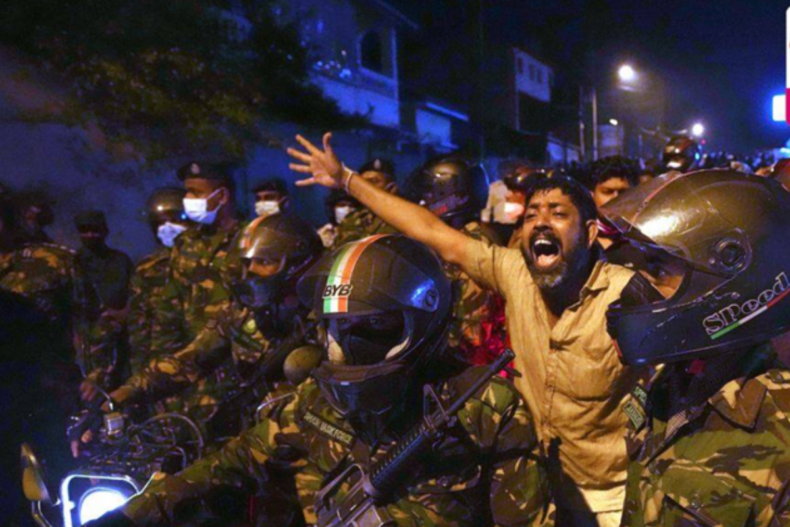Sri Lanka Crisis Update: India is prepared to commit up to an additional $2 billion in humanitarian assistance to Sri Lanka, as well as food and fuel, to make up for the lack of supplies to its neighboring country. “We are interested in assisting them and are prepared to provide additional swap lines and loans,” said an Indian source who was familiar with the various discussions with Sri Lanka.
Sri Lanka has asked India for assistance in bridging the country’s fiscal gap and in obtaining international assistance. The country is currently in talks with the International Monetary Fund (IMF) about a bailout program to help it recover from the worst economic crisis it has experienced in decades. For the first time since the country’s independence in 1948, Sri Lanka has experienced a default on its debt. On Wednesday, the high commissioner for Sri Lanka, Milinda Moragoda, met with the finance minister, Nirmala Sitharaman, in New Delhi to discuss the major issues that the country is facing at this time. Sitharaman expressed her concern about the humanitarian consequences of the economic crisis, and she stated that “India would stand by Sri Lanka as it faces its difficulties.”
They also talk about how they can make use of the assistance provided by India in the form of credits as well as balance payment assistance for their businesses. The assistance provided by India may be able to assist in bridging some of the financial crises until the negotiations with the IMF are completed. An anonymous source stated, “It has also been observed that India was the first country to support Sri Lanka in this manner to secure bridging finance until that program was in place.”
While the country is attempting to find solutions to the problems caused by the disaster, China has suspended all of its energy projects in the country. This is thought to be a trap set by the Chinese government to keep Sri Lanka even more in debt.
Along with the economic crisis, the country is also experiencing a financial crisis, as well as a political crisis, as the country’s president has refused to resign from his position in the face of mounting pressure. How Sri Lanka’s president, Gotabaya Rajapaksa, has dealt with the country’s economic crisis has left people disappointed, and the public has become violent and enraged as a result. Following a meeting with protesters calling for the resignation of Gotabaya, the country’s president-initiated contact with them on Wednesday. In addition, the opposition party has threatened to bring a no-confidence motion against the ruling coalition. The protestors outside the president’s office in Colombo have refused to engage in a peace dialogue and have called for the resignation of the president and his family, as well as their removal from the residence.
A lower foreign currency rate was assigned by S&P Global Ratings on Wednesday, down from a previous rating of “CCC” to “CC.” Working-class people are bearing the brunt of the burden in a country with a population of 22 million people that is spiraling downward due to the economic crisis and being pressed for external funding. Even though protests against the parliament are continuing in every part of the country, the working class is the one that is struggling to make ends meet daily. Because of the severe scarcity of basic resources and the government’s inability to pay for important imports, the general public is experiencing basic living conditions like power outages that last nearly 13 hours.
Sri Lanka is undergoing a major debt restructuring before presenting its case to the International Monetary Fund. Sri Lanka, on the other hand, has asked India to contact its bilateral and multilateral partners, such as Japan, the United States, and Australia, to ask them for help.
Edited By: Vanshika Sahu
Published By: Mohammed Anees













